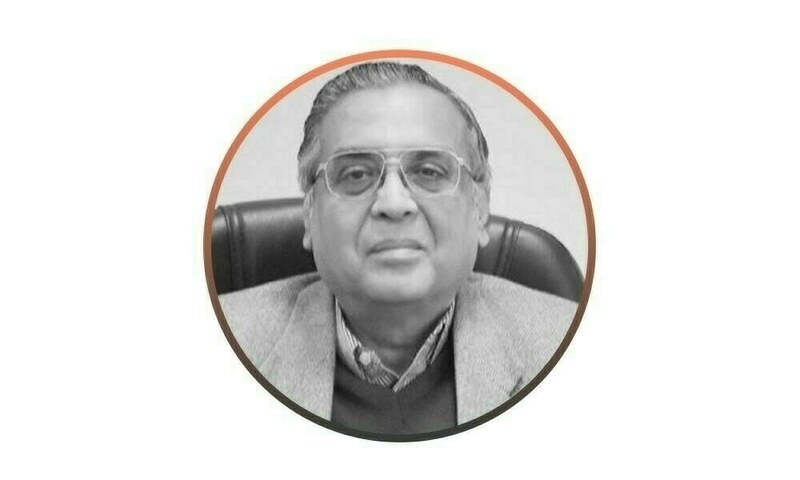
The Federal Ministry of Finance has released the estimates of poverty-related expenditures for 2022-23. Thanks are due to the PRSP Secretariat of the Ministry of Finance for having produced these estimates annually since 2001.
The focus in this article is on spending on education and health by the Federal government and the four Provincial governments. An analysis is undertaken not only of the level of spending but also the composition of such expenditure.
The first analysis relates to the combined share of education and health in total public expenditure. This will indicate the relative priority attached to such spending by governments in Pakistan. The quantification is done from 2002-23 to 2022-23 by five-year intervals.
The share in public expenditure was 11.2% in 2002-03, which fell to 10.7% in 2007-08. The priority attached to social sectors appears to have been low during the tenure of the military government. The share went up to 13.3% in 2012-13 and reached a peak of 16.6% in 2017-18. This was the peak year and in terms of the tax-to-GDP ratio, indicating that at the margin higher priority was given to social sector spending when more revenues became available.
The year, 2022-23, has witnessed a sharp decline in the share of social sector spending. It has fallen to 12.5% and is even lower than the level attained a decade ago of 13.3%.
Clearly, there is evidence that with the fall in the tax-to-GDP ratio and consequently in divisible pool transfers to the Provincial governments, there is a disproportionate cutback in education and health spending.
Beyond the aggregates, there is the need first to look at the shares of the Federal and Provincial governments in social sector spending. The latest estimate of the share of Federal government in education expenditure is 13.5% and in health expenditure, 4.4%.
Delivery of social services has been made primarily the responsibility of the Provincial governments in the 18th Amendment to the Constitution. The significant share of the Federal government in education spending is attributable to financing of universities by the Higher Education Commission (HEC) in Islamabad. However, the Federal government is contemplating an exit from this role and transferring the responsibility to the Provincial governments.
We turn now to the other key magnitudes. These are the level of spending on health and education respectively as a percentage of the GDP. The same inverted U-shaped curve is observed from 2002-03 to 2022-23 in the total spending combined on health and education.
The estimated magnitude of such spending was 1.53% of the GDP in 2002-03. It rose to a peak of 3.17% of the GDP in 2017-18 and has since fallen to 2.41% of the GDP. The fall from 2017-18 to 2022-23 is observed only in education spending of 2.11% of the GDP in 2017-18 to 1.31% of the GDP in 2022-23. It has actually risen somewhat in the health sector from 1.06% of the GDP in 2017-18 to 1.10% of the GDP in 2022-23.
There is need to highlight the relatively low level of public education spending in Pakistan in comparison, for example, with India and Bangladesh. The level of public expenditure on education is over 4% of the GDP in India and over 2% of the GDP in Bangladesh as compared to 1.3% of the GDP in Pakistan. Therefore, it is not surprising that the literacy rate is 76% in Bangladesh and in India, as compared to 60% in Pakistan. Similarly, life expectancy is 74 years in Bangladesh, 67 years in India and 66 years in Pakistan.
The composition of expenditure on the social sectors has also been changing. The share of current spending was 72% and the remainder, 28%, on development expenditure in 2012-13. The latter share has now declined to 14%, while the former has increased to 86%.
The share of development spending in education is very low at only 10%. In fact, the total number of schools, both public and private, in the country is declining. This is happening at a time when there is exponential growth in the number of out-of-school children. This has already reached 26 million, and is truly an indictment of the education system of Pakistan. The Prime Minister declared an ‘education emergency’ but there was no response in terms of big increase in allocation to education and efficiency measures in the Provincial budgets of 2024-25.
The next step in the appraisal is to look at the shares in expenditure. Within education, there has been little change in the pattern of allocations since 2017-18. Primary education and secondary education continue to get the share of between 32% to 35% each. Higher education has the remaining share of 25% and the rest for other functions.
Significant changes are observed in the composition of health expenditure. The share of curative spending has decreased from 55% to 42%, while that of preventive measures has risen from 45% to 58%. This can be considered as the appropriate change in priorities.
Finally, there is need to look at the relatively level of social sector spending as a percentage of the provincial GDP of each Provincial government. It is the highest at 3.6% of the GDP in Balochistan, followed by 3% of the GDP in Khyber-Pakhtunkhwa, 2.1% of the GDP in Punjab and 2.0% in Sindh.
The time has come for a quantum jump in social sector spending if Pakistan is to improve the level of human development of its people. The UNDP HDI of countries already places Pakistan at the low level of human development. Therefore, out of the increase in tax revenues due to the targeted increase of 3% in the national tax-to-GDP ratio, at least 1% of the GDP should go towards enhanced social sector spending.
Copyright Business Recorder, 2024